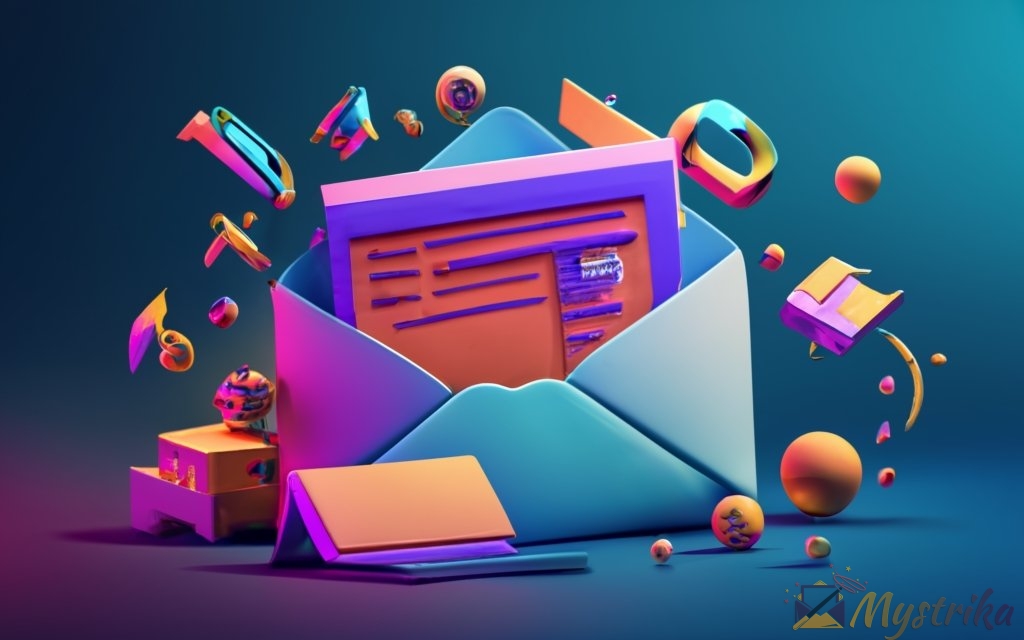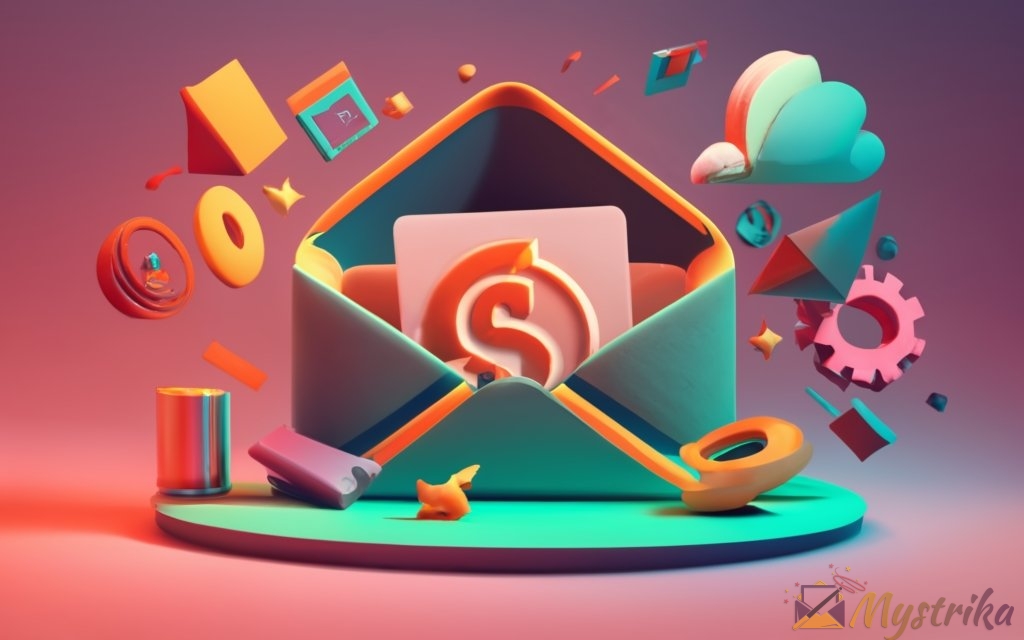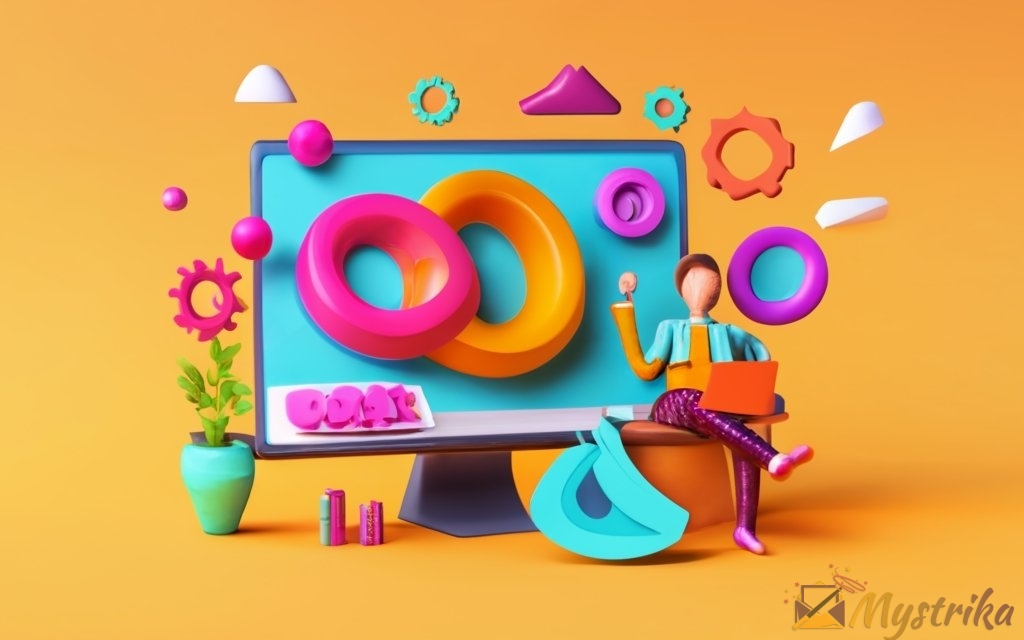Forget fumbling with attachments – learn the insider tricks to flawlessly forward emails AND their files in Gmail. This complete guide covers every attachment scenario so you can breeze through sharing important messages sans the headache.
Forwarding attachments with an email lets you bundle up everything neatly in one click. But not so fast! Without the right techniques, you risk losing files, corrupting documents, and giving yourself a migraine. This comprehensive reference walks through how to be an attachment forwarding pro. Learn to troubleshoot issues, customize what you send, use alternatives for large files, and more.
Never will an attachment get left behind again after mastering our forwarder’s toolkit. Gmail’s attachment features are powerful but underutilized – it’s time to unlock their full potential.
Why Forward Emails as Attachments?
Forwarding an email as an attachment rather than just forwarding the content allows you to preserve all of the important header information and metadata associated with that email. Here’s a closer look at some of the key reasons you may want to forward emails as attachments.
Preserve Original Headers and Metadata
When you forward an email normally, your email client strips out some of the critical background information including the full header, transmission data, and routing details. But when you specifically forward an email as an attachment, all of that metadata is bundled up and sent along with the email content.
Some of the key details that forwarding as an attachment preserves:
- Full Email Headers: The header contains technical information about an email including the originating IP address, authentication details, server paths it passed through, and more. This provides the full context of the email.
- Transmission Data: Information on when the email was sent, received, opened, etc is retained. This can be useful for reconstructing a timeline.
- Routing Details: You can see the full journey the email took from server to server to reach the recipient when forwarding as an attachment.
- Spam/Phishing Evidence: Headers contain clues that help identify spam and phishing attempts if you need to report the message.
- Legal Audit Trail: In regulated industries, retaining the full, unmodified email may be required for legal compliance.
In some cases like reporting suspicious emails or cyber security threats, preserving the full header and transmission details can be extremely important for investigators to identify the root source and take action. The metadata provides the proof needed.
Send Emails in Their Original Format
Another benefit of forwarding as an attachment is that the email content itself is bundled up and sent along in its original format.
This means that any formatting like fonts, colors, alignment, embedded images, etc remain intact. With normal forwarding, some email clients may automatically convert fonts or make other display changes that alter the look of the message.
By keeping emails in their original condition, you provide a true representation of the message as received. For things like order confirmations, financial documents, project deliverables, or any other situation where formatting is meaningful, this can be beneficial.
Provide Full Context When Reporting Emails
A common reason people forward emails as attachments is to report suspicious, fraudulent, or malicious messages. This includes instances of:
- Phishing attempts
- Spam
- Email scams
- Harassment/threats
- Illegal content
When reporting these types of emails, you want to provide as much context and evidence as possible to the recipient such as your IT team, email provider, or authorities.
Forwarding as an attachment bundles up everything neatly: raw content, transmission/header details, forensic metadata, etc. This gives investigators the full scope of information needed to analyze the report and take action.
Trying to gather all of that from a plain-text forwarded body alone would be difficult or impossible in some cases. So attaching the original message maintains the integrity and simplicity of reporting abusive emails.
Additional Benefits
Beyond just the metadata preservation, source formatting, and reporting use cases, there are a few other situations where forwarding as an attachment can be advantageous:
- The original email included files you want to pass on such as document attachments. Forwarding as an attachment brings those file attachments along.
- You want to send an email to a group of recipients but don’t want to expose everyone’s email addresses. Forwarding as an attachment allows sending a single message without revealing the To/CC details to the group.
- You want to export or back up a collection of emails. Forwarding as attachments allows bundling many messages conveniently.
- You need to send emails larger than the max allowed attachment size. Forwarding pulls them through as attachments bypassing limits.
So in summary, forwarding an email as an attachment rather than just sending content gives you the flexibility to preserve email data, simplify reporting, and pass messages along with full fidelity. The extra bit of effort provides benefits in many common situations.

How to Forward an Email as an Attachment in Gmail
Forwarding emails with attachments intact is a piece of cake in Gmail. Here are simple steps to forward messages as attachments on desktop, Android devices, and iPhones.
Forwarding Email Attachments on Desktop
If you use Gmail through a web browser on your Windows PC, Mac, or Chromebook, forwarding attachments is quick and easy:
Step 1: Open the Gmail inbox and locate the email you want to forward as an attachment. Click to open the message.
Step 2: At the top, click the forward arrow icon.
Step 3: From the dropdown menu that appears, choose the “Forward as attachment” option.
And that’s it! The original email will now be forwarded as an attachment.
By default, the subject will be prefixed with “Fwd:” to indicate the message has been forwarded. You can keep this or manually edit the subject if desired.
Now just enter the recipient(s) email address(es) in the To field, add any text you want in the message body, and hit send. The attached email will be delivered along with your new forward cover note.
Some things to keep in mind when forwarding attachments on desktop:
- You can select multiple emails to forward as attachments in one message. Simply check the boxes next to each, then hit the forward button and choose the attachment option.
- To remove any of the original attachments, expand the attachment section and uncheck those you want to exclude.
- If the email you’re forwarding is especially large, Gmail may automatically forward as an attachment rather than embedding it in the body, even if you don’t explicitly choose the attachment option.
- You can also drag and drop an open email directly into a new compose message window to attach it.
- Forwarding to multiple recipients as attachments is great for sharing an email without exposing everyone’s emails publicly.
Overall, forwarding as an attachment through desktop Gmail is super quick and easy thanks to the dedicated menu option. Just open, forward, send!
Forwarding Emails as Attachments on Android
Gmail’s Android app makes it just as simple to forward messages as attachments right from your mobile device. Here’s how:
Step 1: Open the Gmail app and find the message you want to forward with attachment.
Step 2: Press and hold your finger on that email to select it. This will highlight it and bring up a menu overlay.
Step 3: In the menu that pops up, tap the option that says “Forward as attachment.”
And you’re all set! This will bring up the forward composition window with the original email attached.
Now enter the recipient, add any notes to the body, and tap the send icon.
Even on Android, you can select multiple emails to forward together before tapping the attachment option. The steps are the same as forwarding a single message.
A couple tips for smoothly forwarding attachments from your Android device:
- If you want to exclude any attachments from the original email, tap the arrow icon next to the forwarded attachment to expand it. Uncheck any files you don’t want to include.
- You can preview forwarded attachments by long-pressing on them and choosing “View” from the menu.
- When composing your forward note, tap the paperclip icon to add any additional attachments from your device storage or cloud drives.
- If you enabled Chat features in Gmail, you can also forward emails as attachments directly into new or existing conversations.
Thanks to the streamlined interface, getting those email attachments sent on mobile takes seconds. Give it a shot next time you need to forward emails from your Android phone or tablet.
Forwarding Emails as Attachments on iPhone
Forwarding email attachments on an iPhone is just as easy as desktop or Android thanks to Gmail’s clean attachment options.
Here are the steps to forward an email as an attachment right from your iPhone:
Step 1: Open the Gmail app and find the message carrying the attachment(s) you want to forward. Tap to open it.
Step 2: Press and hold your finger on the open email to select it.
Step 3: In the menu overlay that appears, tap “Forward as attachment.”
Just like that, the email will become an attached forward in a new draft message.
Now complete the forward by adding recipients, composing your message body text, and tapping the send button (paper airplane icon). Off it goes with the attachment along for the ride!
Some additional pointers for smoothly forwarding attachments on your iPhone:
- To remove any attachments you don’t want to pass along, tap the attachment icon at the bottom of the draft forward to expand it. Then uncheck those you want to exclude.
- If the original email already has the maximum attachment count, any added files will be compressed into a ZIP file. Recipients may need to extract the ZIP to access all enclosed attachments.
- You can preview attachments by tapping and holding them, then choosing Quick Look. Useful for verifying documents or media before sending.
- To add new attachments from iCloud Drive or other sources, tap the “+” button at the bottom of the compose window and select a file.
- If the email content disappears when selecting Forward as attachment, tap the subject line to reopen the message text.
Thanks to the user-friendly interface, forwarding attachments is frictionless on both mobile platforms. Give it a try next time you need to send emails (and their files) along for the ride!

Gmail Attachment Forwarding Options
Gmail provides flexibility when forwarding email attachments. You can forward multiple messages together, pick and choose which attachments to include or exclude, and customize the experience to suit your needs.
Forwarding Multiple Emails as Attachments
When you need to forward a batch of emails as attachments, Gmail lets you select multiple messages and attach them in one go. Here’s how:
Desktop
- Select all the emails you want to forward by checking the boxes next to each message. You can use the Shift or Ctrl/Command keys to select a range.
- Click the forward arrow as you normally would for a single email.
- Choose the “Forward as attachment” option from the menu.
- All your selected emails will now be bundled up and attached in one new forward draft.
Android
- Long press on the first email you want to forward as an attachment. Don’t lift your finger.
- Use your other hand to tap the additional emails you need to attach. Selected messages will be highlighted.
- Once your batch is selected, lift your first finger then tap “Forward as attachment.”
iPhone
- Tap and hold the first email, then drag it slightly. Don’t lift your finger.
- Use another finger to tap any other emails you want to add. This enters multi-select mode.
- Lift your first finger, then tap the “Forward as attachment” option.
The steps are essentially the same as forwarding individual emails, just with multiple selections. This works great when you need to bundle a set of related messages for someone to review.
A couple tips when forwarding multiple emails as attachments:
- If you select too many, Gmail may opt to forward plain text rather than huge attachments. Try selecting fewer threads.
- You can also drag and drop multiple open message windows into a new compose window to batch forward.
- Edit the subject line to indicate the number of emails being forwarded (e.g. “5 emails forwarded”).
Batch forwarding emails as attachments is a timesaver!
Forwarding Only Select Attachments
When forwarding an email, you may not necessarily want to include all original attachments. Fortunately, Gmail makes it easy to pick and choose.
Desktop
- After selecting “Forward as attachment”, expand the attachment section.
- Uncheck any attachments you want to exclude from the forward.
- Removed attachments disappear. All checked files will be sent.
Android
- After choosing “Forward as attachment”, tap the arrow icon next to the attachment.
- This expands the list of files. Uncheck those you want to leave out.
- Tap outside the menu to return to the message. Non-selected attachments will be gone.
iPhone
- After picking “Forward as attachment”, tap the attachment icon at the bottom.
- Tap the X icon next to any attachments you want to remove.
- When back at the message, those unchecked files will not be included.
Why exclude attachments when forwarding? A few common reasons:
- The files contain sensitive information not meant for the recipient.
- The attachments are very large and not relevant to the receiver.
- You want to provide some context via email without attachments.
- Limits on number or size of attachments being exceeded.
With the ability to toggle attachments on and off, you have complete control when forwarding emails. Only send what’s necessary.
Bonus Tips for Forwarding Attachments
Here are a few more tips related to forwarding attachments in Gmail you may find helpful:
- You can forward an email as an attachment to yourself to create a copy with headers/metadata intact. Just choose your own address when forwarding.
- To compress attachments into a ZIP file rather than forwarding individually, select the emails then choose Download > ZIP before forwarding the ZIP.
- When forwarding documents, you can substitute attachments for Google Drive links to allow collaborative editing rather than just view/download.
- Always proofread the recipients and your message before sending attachments to avoid potentially embarrassing or sensitive mistakes.
- Turn on sending confirmations in Settings to get notified when forwarded attachments are opened by recipients.
- If you enable Chat, you can forward attachments directly into Rooms for shared access rather than individual emails.
- Star important forwarded messages so you can easily track them and know if/when recipients read the attached emails.
- You can print forwarded emails with attachments using the Print option from More actions. This includes header details.
Don’t be afraid to get creative with how you utilize Gmail’s flexible attachment forwarding capabilities. Ultimately the goal is to provide recipients what they need in a convenient, accessible way.

Troubleshooting Forwarding Attachments in Gmail
For the most part, forwarding email attachments in Gmail is quick and seamless. But occasionally technical hiccups happen. Here are some troubleshooting tips for the two most common scenarios: missing attachments and non-opening attachments.
Attachment Missing from Forwarded Email
You carefully select “Forward as attachment” but when you receive the forwarded message, some or all of the attachments are gone. What happened?
Before panicking, first double check that you actually used the attachment forwarding option correctly:
- Open the sent forwarded email and inspect the attachments section. Is anything shown here? If so, then they were sent properly and the recipient needs to check their filters.
- Look for any error notifications at the time you sent the forward or in the banner section of the draft. Warnings about blocking or file size may explain missing attachments.
- View the email headers by opening the forward and choosing “Show original” from the More actions menu. See if attachments are referenced in the metadata.
If you confirm the steps were followed correctly, a couple other things could cause attachments to disappear:
Accidental Omission
Make sure you didn’t uncheck any of the attachments when forwarding, thinking you were removing new added files. Only existing attachments should get unchecked.
File Type Blocking
Some email systems automatically remove certain attachment types considered risky like .exe files. The recipient’s filters may be to blame.
Size Limits
Individual attachments over 25MB cannot be forwarded. Try using Google Drive links instead for large files.
Corruption
A glitch could have occurred converting the attachment for forwarding. Try dragging and dropping the original into a new message.
As a last resort, apologize to the recipient and re-forward the attachment(s) individually – this avoids the forwarding mechanism entirely.
Attachment Won’t Open or Download
The forwarded email arrives intact with attachments, but the recipient can’t actually view one or more of the files. What’s wrong?
If attachments won’t open, seem damaged, or can’t be downloaded from a forwarded message, start troubleshooting here:
Corrupted File
Something happened to the attachment’s contents in transit. Re-forward the original message so the file is re-uploaded fresh.
Unsupported File Type
The recipient may not have an application installed that can open the attachment’s format. Advise them on how to get the required software.
Blocked File Type
Similar to the missing attachment case, blocked types like executables won’t make it through certain filters. You may need to send an alternative format.
Size Limits
Some email providers cap attachment sizes at less than Gmail’s 25MB max. For large files, try sharing via Drive link instead.
Download Issues
The problem could be on the recipient’s end. Have them try downloading attachments through their native email client rather than the web interface.
Preview Only
Viewable attachments like images may only be available for preview rather than download via some clients. Actual files can only be saved from native apps.
For downloaded attachments that seem damaged, re-forwarding is again the best troubleshooting step. And be sure to communicate clearly with recipients to understand exactly what file behavior they are experiencing for quicker diagnosis and resolution.
Best Practices to Avoid Attachment Issues
To help ensure seamless forwarding of email attachments, keep these best practices in mind:
- Double check you use the proper attachment forwarding option, especially from mobile where it’s easy to miss the extra menu selection.
- When forwarding multiple emails, attach them individually rather than selecting all to avoid size limits.
- Verify attachments came through intact right after sending the forward. Preview files if possible.
- Ask recipients to check their spam folder for any missing attachments blocked by filters.
- If a particular attachment type is giving you issues, consider an alternate format if possible.
- Always send a test attachment to yourself first if concerned about corruption or blocking.
- Forward fewer attachments per message to prevent hitting limits or timeouts. You can easily send a follow-up message.
- Compress (ZIP) attachments before forwarding to avoid overwhelming recipients and crossing restrictions.
- Follow up with recipients if they report issues opening or downloading files.
With proper care when composing forwarded messages, you should avoid most common email attachment headaches! But if problems do pop up, use these troubleshooting tips to get back on track.

Best Practices for Forwarding Attachments
Forwarding emails with attachments doesn’t end after hitting send. To ensure the process goes smoothly and securely, keep these best practices in mind.
Add Context for the Recipient
Don’t just forward an email and attachments without any explanation. Give the recipient proper context:
- Summarize what information the attachment contains and why it’s relevant to them.
- If forwarding meeting notes, mention key discussion points or action items they need to know.
- If forwarding an e-signed document, note where to countersign or who else needs to see it.
- If sharing a project deliverable, remind them which phase or component it covers.
Adding this contextual information helps the recipient understand the significance of the attachments. An introductory summary also gives them insights into how to process the files rather than just dumping them cold.
Set clear expectations upfront so the receiver knows why you forwarded the attachment and what to do with it.
Verify Attachments Forwarded Properly
Before calling it done, double check that any attachments actually arrived intact:
- Visually inspect the sent message to see attachments listed.
- If possible, open and preview attachments to verify contents are not corrupted.
- Try downloading attachments to ensure the files can save properly.
- Ask the recipient to confirm attachments arrived as expected on their end.
Taking a minute to validate will help spot any issues with missing files, formatting problems, blocked attachments, or download failures. Better to catch that upfront rather than finding out much later something went wrong.
Check for Sensitive Information Before Forwarding
When forwarding emails, always pause to consider whether any sensitive information is being shared:
- Double check whether financials, legal matters, or confidential product details are contained in the message text or attachments.
- Verify you’re not accidentally including internal notes or discussions not meant for external recipients.
- If needed, scrub any private sender/recipient details not relevant or visible to the receiver.
- Ensure you comply with any regulatory rules or data restrictions applicable to the content.
- If you have serious concerns, consider alternative file transfer methods rather than email forwarding.
- When in doubt, ask the original sender if they are comfortable with the message being forwarded before doing so.
Accidental data leaks via forwarded attachments can have major consequences. When reviewing the message, keep privacy and security at front of mind before hitting send.
Optimize Attachments for the Recipient
Rather than just blindly forwarding attachments, consider minor tweaks to optimize the content for the recipient:
- If the files are very large, try condensing, splitting into logical chunks, or linking to cloud versions rather than attaching.
- Convert file formats when needed to ensure compatibility with the recipient’s applications.
- Compress attachments into a ZIP file if forwarding a large batch.
- Rename attachments to more precisely identify the contents. Generic “Document.pdf” tells them nothing.
- Provide direct download links in the email body as a backup option if attachments have issues.
- Proactively address any questions or concerns the recipient may have based on the attachment contents.
- Offer to make any revisions, provide additional info, or set up a call to walk through the attachments if needed.
Going above and beyond on the small refinement details will make life much easier for the recipient. They’ll appreciate the effort!
Other Handy Tips
And a few final thoughts for attachment forwarding best practices:
- If impatient, ask the recipient to confirm when they’ve received and reviewed the attachments.
- To limit attachment size, consider alternative transfers like shared links to cloud documents.
- Always be polite and thankful when requesting recipients to review attachments you’ve sent.
- Follow up if you receive any bounce notices indicating a forwarded attachment was not delivered.
- Before forwarding multiple attachment-heavy threads, clean up extraneous quotes and content to simplify.
- Forwarding attachments you receive grants implicit permission for further sharing. Clarify restrictions if any.
Applying sound judgment will help forwarding attachments be a breeze rather than a burden for all parties. Keep these tips in mind!

Alternative Ways to Share Attachments
Although forwarding emails with attachments is easy in Gmail, sometimes there are better options for safely sharing files depending on your use case. Here are a few alternatives to consider instead of attachments.
Download and Reattach Files
Rather than forwarding an attachment as-is, you can download it first and then reattach the file individually:
Pros
- Avoids potential corruption or formatting issues that occasionally happen when forwarding attachments in Gmail.
- Allows safely scrubbing metadata or contents before sharing sensitive attachments.
- Lets you modify the filename, provide latest version, or change file type if needed.
- Attaching individual files gives you more control over which to include vs. forwarding an entire thread.
Cons
- Adds extra steps of having to download, prep, and re-upload attachments rather than direct forward.
- Loses all context from the original email (headers, source, etc.) unless you include snippets.
- Reattachment size limits still apply.
Upload Attachments to Cloud Storage
For large file attachments or batches, cloud services like Google Drive provide flexibility:
Pros
- Avoids email size limits when attaching large documents, videos, etc.
- Allows recipients to preview files online without downloading.
- Enables collaborating on shared documents uploaded to the cloud.
- Attaching links simplifies forwarding multiple files vs. huge attachments.
Cons
- Recipients need access and permissions for whichever cloud service hosts the files.
- Original email context is lost unless you copy-paste content alongside links.
- Shared visibility of cloud attachments may be a privacy concern.
Export Emails to PDFs
Converting emails into PDF files can also work around attachment limits:
Pros
- PDFs retain all visual formatting, images, headers, etc. from emails.
- Allows significant compression of large/long email threads into single PDFs.
- Broad compatibility ensures recipients can open properly on any device.
- Easy to apply security features like passwords to sensitive PDF attachments.
Cons
- PDF conversion can still be tricky for complex emails, especially with tables.
- Any non-PDF attachments need to be exported separately.
- Full content searchability and editing features are lost.
When Not to Use Attachments
Finally, consider avoiding any attachments when:
- Working with non-business acquaintances where links may seem strange.
- Emailing very sensitive or legally confidential information.
- The attachment contents are time-sensitive.
- You need to collaborate or edit jointly.
- Recordkeeping and retention are important.
Choose the best option strategically based on your use case, recipient, and attachment details. Forwarding isn’t necessarily always optimal, but alternatives help fill any gaps!

Ensuring Successful Email Attachment Delivery
You’ve put time and care into preparing an email and attachments to share. But the job isn’t done until you verify the files successfully reached the recipient intact. Here are some final tips to confirm attachment delivery.
Compress Large Files Before Attaching
If you’re attaching a very large file like a big presentation, video, collection of photos, etc., first compress it to reduce the size:
- Use a compression tool like WinZip (Windows) or Keka (Mac) to create a smaller ZIP file. Most are compatible across platforms.
- Consider breaking up the content into logical chunks (e.g. Part 1 and Part 2 files) to stay under attachment size limits.
- Host the uncompressed files in Google Drive or Dropbox, then share links instead of direct attachments.
- For important videos, upload to YouTube unlisted then share a private link that won’t expire.
Reducing large attachment file sizes minimizes risks of email bouncebacks or rejections from exceeding size limits. Compressing buys peace of mind.
Double Check the Recipient’s Email Address
One innocent typo in the recipient’s contact info means your carefully composed message and attachments end up lost in the ether. Always double check that:
- You’ve selected the correct recipient from your contacts if available rather than typing it out.
- There are no spelling errors or accidental character replacements if manually entering recipient addresses.
- You didn’t mix up similarly named contacts like “John Anderson” and “John Andrewson”.
- The email domain is 100% accurate, which autocorrect can sometimes change incorrectly.
Taking a moment to visually verify the sending details provides cheap insurance and saves embarrassment. Don’t let a tiny mistake sabotage your hard work!
Follow Up if Attachments Fail to Send
Even after perfecting the attachment forwarding process, occasional hiccups may still occur. If a recipient tells you they didn’t receive the attachments or had trouble downloading them, proactively follow up:
- Have them check their spam folder in case the message was incorrectly filtered.
- Review their email bounce notices to diagnose any rejection causes like inactive addresses or size limits.
- Confirm you are sending files in a format compatible with the recipient’s operating system and applications.
- Try sending attachments individually in smaller batches rather than one large forward.
- Ultimately re-send the attachments via a fresh email or alternative transfer method.
- Consider enabling read receipts so you’re notified when recipients successfully receive and open the attachments.
A bit of extra vigilance goes a long way to ensure attachments aren’t lost in the shuffle. Being proactive will provide peace of mind that your hard work gets into the right hands uncorrupted.
Bonus Tips for Attachment Success
And a few other quick tips to boost attachment sending success:
- When forwarding to groups, send in smaller batches to avoid hitting distribution list size restrictions.
- Enable Gmail’s confidential mode to prevent forwarded attachments from being copied, downloaded, etc.
- Always include a coherent subject line so recipients recognize the attachment contents at a glance.
- To prevent editing, use PDF or other read-only formats when forwarding finalized documents.
- Let recipients know when you’ve sent the attachment and request confirmation once they receive it.
- Follow up if the attachments are time-sensitive to ensure prompt delivery.
With attention to detail when sending attachments, a few proactive checks, and persistence following up on issues, you can achieve a peace of mind that your files will arrive intact every time.

Key Takeaways
Forwarding emails as attachments rather than standard forwards comes with some clear benefits. Here are the key takeaways to remember:
- Forwarding as an attachment preserves the full header, metadata, transmission data, and other technical details of the original email. This provides important context and forensic information.
- Attachments maintain the original email formatting, contents, and files intact rather than possibly altering them during a standard forward. What you send is what recipients get.
- For reporting emails like harassment, spam and phishing scams, forwarding as an attachment bundles everything up neatly as evidence for investigators.
- Gmail lets you easily forward single or multiple emails as attachments right from the menu. You can also customize attachments to include only what you want.
- If you run into issues with missing, non-opening or blocked attachments, Gmail provides ways to troubleshoot and get the files through on a second try.
- Consider alternatives like cloud sharing links or PDFs in situations where attachment size, privacy or compatibility are concerns.
- Following best practices around compressing files, verifying delivery, and adding context ensures smooth sailing when sharing attachments.
Forwarding as an attachment takes just a few more clicks but provides a lot of advantages over standard forwarding. Keep these benefits and tips in mind to make the most of this useful Gmail feature!
Frequently Asked Questions
Q: Does forwarding as attachment work for multiple Gmail accounts?
A: Yes, you can forward emails as attachments between any Gmail accounts you control. The steps are the same regardless of which account sends the forward or receives it.
Q: Can I forward attachments to non-Gmail email addresses?
A: Absolutely. Forwarding attachments works for any recipient email address – the steps are identical. Non-Gmail users will receive the forwarded messages with attachments intact.
Q: Do attachments count towards my Gmail storage quota?
A: Yes, any incoming or sent attachments consume your overall Gmail storage allocation. Large forwarded attachments will eat up space faster.
Q: Is there a size limit on attachments I can forward?
A: Gmail allows attachments up to 25MB in size. For larger files, you may need to use a cloud storage link instead of directly attaching.
Q: How do I forward multiple Gmail messages as one attachment?
A: Select all emails you want to consolidate first, then choose Forward as attachment. Gmail will attach them together in one forward.
Q: Why do my attachments sometimes get blocked or filtered for recipients?
A: Some email providers automatically remove “risky” attachments like executables. Try more universal formats if attachments don’t go through.
Q: Can I password protect or encrypt attachments before forwarding?
A: Yes, you can encrypt files before attaching and email the password separately. However, most recipients may not be able to open encrypted attachments.
Q: What gets included when I forward as an attachment?
A: The full original email content, headers, metadata, transmission data, files, and any inline images/formatting will be retained.
Q: Is there a limit to how many attachments I can include?
A: Gmail allows up to 25 attachments per message. If you exceed this, attachments may be automatically zipped into one file.
Let me know if you need any other common forwarding attachment questions answered!

